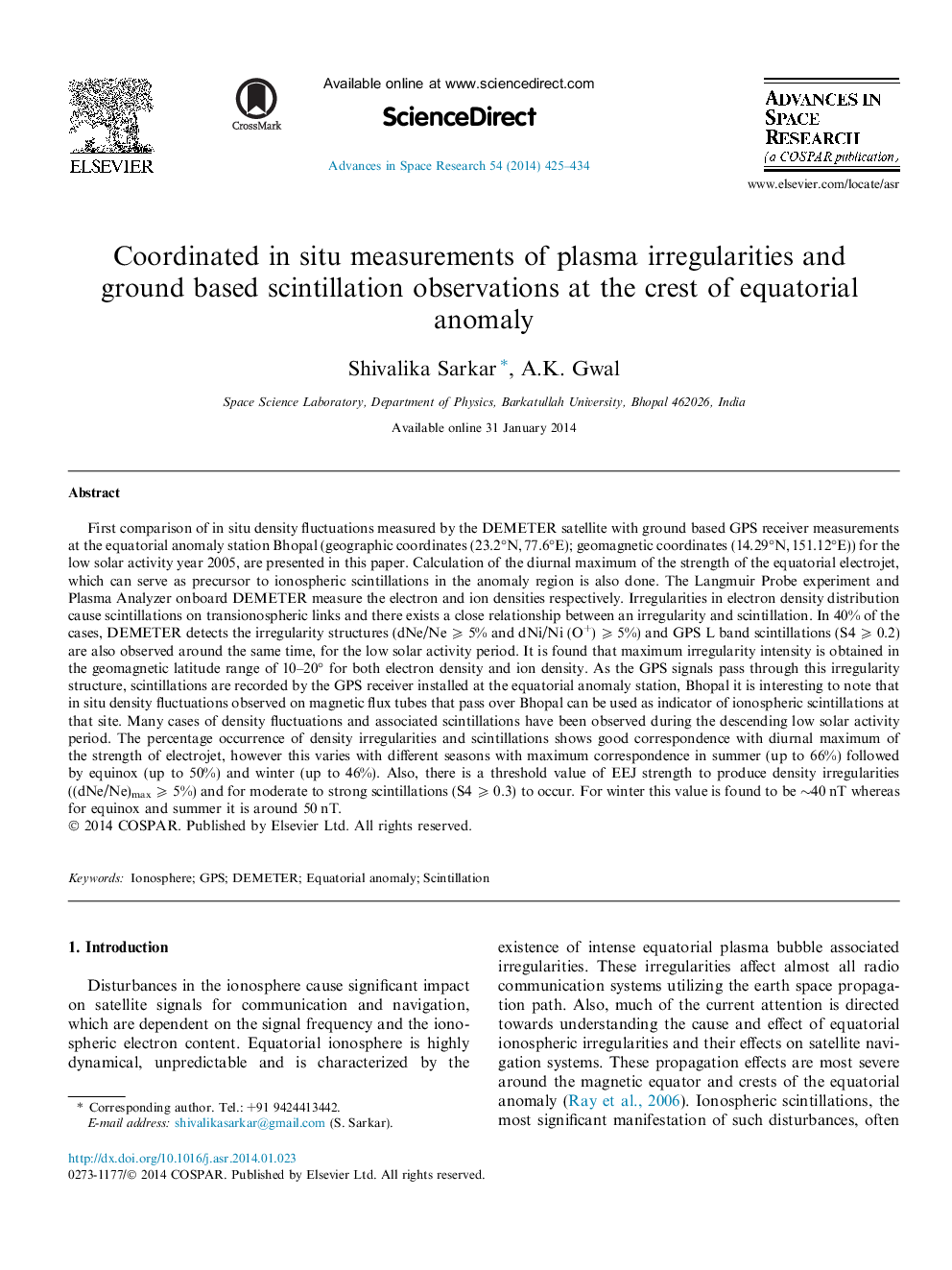| کد مقاله | کد نشریه | سال انتشار | مقاله انگلیسی | نسخه تمام متن |
|---|---|---|---|---|
| 1764907 | 1020076 | 2014 | 10 صفحه PDF | دانلود رایگان |
First comparison of in situ density fluctuations measured by the DEMETER satellite with ground based GPS receiver measurements at the equatorial anomaly station Bhopal (geographic coordinates (23.2°N, 77.6°E); geomagnetic coordinates (14.29°N, 151.12°E)) for the low solar activity year 2005, are presented in this paper. Calculation of the diurnal maximum of the strength of the equatorial electrojet, which can serve as precursor to ionospheric scintillations in the anomaly region is also done. The Langmuir Probe experiment and Plasma Analyzer onboard DEMETER measure the electron and ion densities respectively. Irregularities in electron density distribution cause scintillations on transionospheric links and there exists a close relationship between an irregularity and scintillation. In 40% of the cases, DEMETER detects the irregularity structures (dNe/Ne ⩾ 5% and dNi/Ni (O+) ⩾ 5%) and GPS L band scintillations (S4 ⩾ 0.2) are also observed around the same time, for the low solar activity period. It is found that maximum irregularity intensity is obtained in the geomagnetic latitude range of 10–20° for both electron density and ion density. As the GPS signals pass through this irregularity structure, scintillations are recorded by the GPS receiver installed at the equatorial anomaly station, Bhopal it is interesting to note that in situ density fluctuations observed on magnetic flux tubes that pass over Bhopal can be used as indicator of ionospheric scintillations at that site. Many cases of density fluctuations and associated scintillations have been observed during the descending low solar activity period. The percentage occurrence of density irregularities and scintillations shows good correspondence with diurnal maximum of the strength of electrojet, however this varies with different seasons with maximum correspondence in summer (up to 66%) followed by equinox (up to 50%) and winter (up to 46%). Also, there is a threshold value of EEJ strength to produce density irregularities ((dNe/Ne)max ⩾ 5%) and for moderate to strong scintillations (S4 ⩾ 0.3) to occur. For winter this value is found to be ∼40 nT whereas for equinox and summer it is around 50 nT.
Journal: Advances in Space Research - Volume 54, Issue 3, 1 August 2014, Pages 425–434
